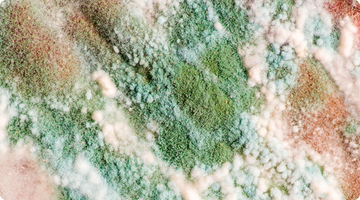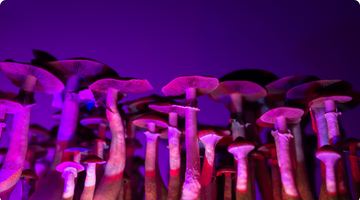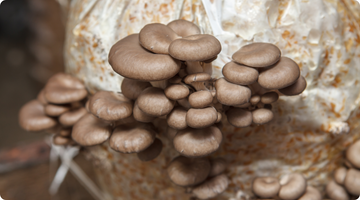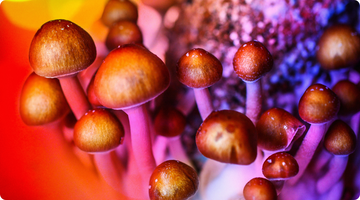Mushroom grow bags are an invaluable tool for cultivating mushrooms, but achieving successful harvests requires avoiding common mistakes and effectively handling contamination. Contamination can quickly ruin a grow bag if not detected and managed early. This comprehensive guide combines tips for avoiding errors and troubleshooting contamination, helping you grow healthy mushrooms and minimize losses.
Common Mistakes to Avoid When Using Mushroom Grow Bags
1. Using Improper Moisture Levels in the Substrate
- Mistake: Overhydrating or underhydrating the substrate.
- Impact: Excess moisture promotes bacterial growth, while dry substrate inhibits mycelium colonization.
- Solution: Prepare the substrate to "field capacity" — damp but not dripping. When squeezed, only a few drops of water should be released.
2. Inadequate Sterilization Practices
- Mistake: Failing to sterilize substrate or grains thoroughly.
- Impact: Residual contaminants like mold and bacteria can outcompete mycelium.
- Solution: Use a pressure cooker at 15 PSI for 90–120 minutes to sterilize grain or high-nutrient substrates.
3. Poor Handling During Inoculation
- Mistake: Introducing contaminants while inoculating the grow bags.
- Impact: Contaminants like mold or bacteria can take hold and ruin the bag.
-
Solution:
- Disinfect all tools and surfaces with isopropyl alcohol.
- Use a still air box or laminar flow hood for sterile inoculation.
- Wear gloves and a mask to minimize airborne contamination.
4. Blocking or Damaging Filter Patches
- Mistake: Covering filter patches or damaging them during handling.
- Impact: Hindered gas exchange leads to poor colonization or contamination.
- Solution: Handle grow bags carefully to avoid tearing the filter patches, and ensure they are unobstructed to allow proper gas exchange.
5. Not Inspecting for Contamination Regularly
- Mistake: Failing to monitor grow bags for contamination signs.
- Impact: Undetected contamination can spread to other bags or ruin the batch.
-
Solution: Inspect bags daily for:
- Unusual colors (green, black, pink).
- Foul odors (sour or putrid smells).
- Slime or wet spots on the substrate.
How to Troubleshoot Contamination in Mushroom Grow Bags
1. Common Types of Contamination
- Mold (Trichoderma): Appears as green patches and spreads quickly.
- Bacterial Contamination: Results in slimy substrate and foul odors.
- Yeast Contamination: Forms creamy or yellow growth in wet conditions.
2. Isolate Contaminated Bags Immediately
- Remove contaminated bags from the growing area as soon as contamination is detected.
- Seal contaminated bags in garbage bags and dispose of them properly to prevent spores from spreading.
3. Identify the Cause of Contamination
Understanding the source of contamination can help you avoid future issues.
- Improper Sterilization: Reassess your sterilization process to ensure the substrate reaches and maintains the correct temperature.
- Poor Workspace Hygiene: Clean and disinfect all tools, surfaces, and hands before handling grow bags.
- Environmental Contaminants: Avoid overcrowding bags and ensure adequate airflow during incubation.
4. Adjust Moisture Levels
- Overhydrated substrates are a breeding ground for bacteria. Ensure grains are properly dried before sterilization.
5. Salvage Partially Contaminated Bags (If Possible)
- If contamination is localized, use sterile tools to cut away the affected portion.
- Quarantine the bag and monitor it closely to ensure the issue doesn’t spread.
Key Preventive Measures to Avoid Mistakes and Contamination
1. Use High-Quality Materials
- Purchase grain spawn, substrate ingredients, and grow bags from reputable suppliers.
2. Optimize Workspace Hygiene
- Always disinfect surfaces, tools, and your hands before handling grow bags or inoculating substrate.
- Consider using a laminar flow hood or still air box for critical steps like inoculation.
3. Maintain Proper Incubation Conditions
- Temperature: Keep the incubation area at 70–75°F (21–24°C) for most mushroom species.
- Ventilation: Ensure bags are spaced apart to allow airflow and prevent CO₂ buildup.
4. Regularly Inspect Grow Bags
- Catch contamination early by inspecting your grow bags daily. Healthy mycelium appears white and fluffy, while discoloration or bad odors are red flags.
5. Don’t Rush the Process
- Allow mycelium to colonize the substrate fully before opening bags or moving to the fruiting stage.
Conclusion
Avoiding common mistakes and troubleshooting contamination effectively are essential skills for successful mushroom cultivation with grow bags. By maintaining proper sterilization, monitoring grow bags regularly, and following best practices for handling and incubation, you can significantly reduce contamination risks and maximize your yields.





